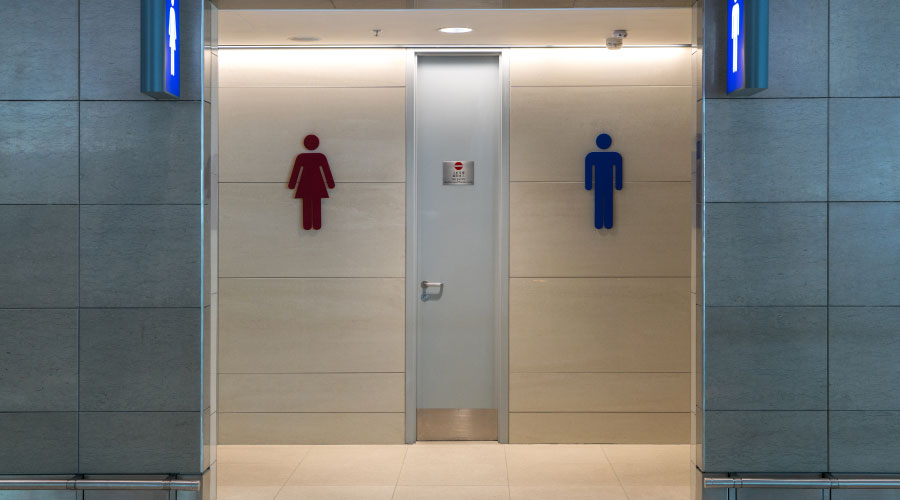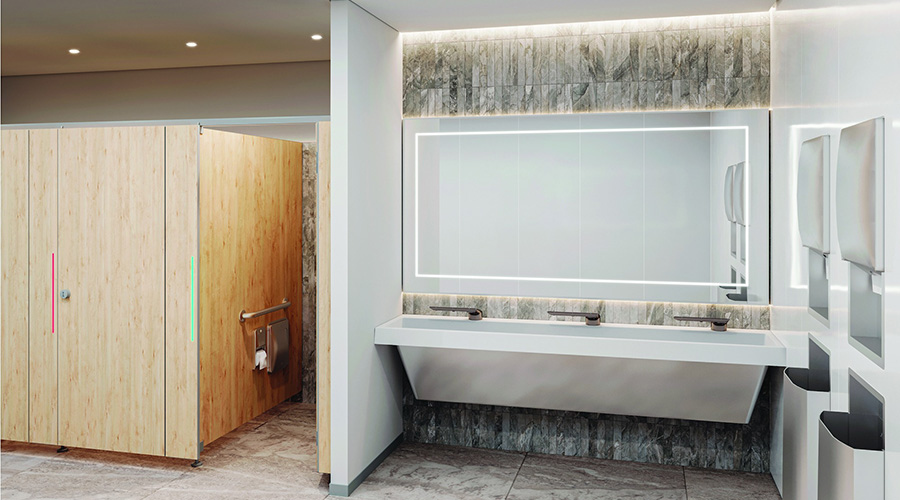Selecting Water Closets and Urinals
In many organizations, there are two priorities for restroom fixtures: cleanliness and sustainability. In some cases, those two goals can be in conflict. But that need not be the case. Understanding fixture options is key to the balancing act.
First, determine the sustainable approach for the organization. Some owners only want code-minimum facilities; others want a moderate sustainable goal of LEED certification. Others take an aggressive approach and want as many water-efficient fixtures as possible in their facilities.
Next, ask the same questions about cleanliness issues. Health care facilities have deep concerns about infection control and keeping patients and the public from touching plumbing fixtures. As a result, they will have an aggressive approach. In other types of facilities, where employees rather than the public will be using the fixtures, a moderate approach may be taken.
Let's take a look at how different plumbing fixtures can help facility managers plan for restroom facilities that perform the balancing act between maintainability and sustainability.
A good place to start is with water closet considerations. With new construction, major renovation projects and replacement fixtures, facility managers should remove old fixtures using more than 1.6 gallons per flush (gpf) and replace them with newer, more efficient fixtures that use 1.28 gpf.
A wide variety of high-efficiency water closets on the market use 1.28 gpf. Most models from mainstream manufacturers work very well, but as with any product, there are exceptions that give the technology a bad name.
One tool to help in selecting fixtures is the EPA-sponsored WaterSense program. WaterSense-labeled fixtures are third-party tested, ensuring compliance with both the required effective flush volume and solid waste removal. When possible, specify fixtures that have the WaterSense label.
Another option for water savings is a dual-flush fixture, which is classified as a high-efficiency toilet. The dual-flush fixture is comprised of two different flushing options. One option uses the full flush (1.6 or 1.28 gpf) to clear the trap of solids, similar to a standard fixture. The second option uses less water (maximum of 1.1 gpf) — enough to clear the trap of liquid waste. Users find the full flush option is not needed for every use and generally appreciate the opportunity to use less water.
Dual-flush fixtures are best suited for situations where the same people, both men and women, use the restroom on a regular basis, such as staff or residential toilet rooms. Dual-flush fixtures are not as effective when installed in public restrooms where individuals aren't familiar with the operation and typically don't take time to use the flush options.
Dual-flush fixtures are included as high-efficiency in the WaterSense program with an effective flush volume not to exceed 1.28 gallons (4.8 liters).
Some manufactures make a sensor-operated, dual-flush fixture. If the user is on the toilet for a limited amount of time, usually 10 seconds, the fixture will flush less water. If a user is on the fixture a longer time, the full water flush is used.
Replacement flush valves are available for the standard 1.6 gpf fixture to convert the existing fixture to dual-flush. This helps reduce the cost on a light renovation.
Be aware of incentives from local utilities to replace old fixtures. Most of these rebate plans require the use of high-efficiency toilets.
Fixture operation also has been improved. Manual flush toilets are common, but not always flushed after use, leading to cleanliness concerns. Sensor-activated toilets, which don't require the user to touch the fixture, are designed to operate after every use. However, sensor-operated fixtures can phantom flush with several flushes during one use, leading to water-efficiency concerns.
Phantom flushes can be reduced by adjusting the beam on the fixture or by adjusting the infrared sensor. A three-second delay could be considered. There are fixtures that can be activated with a wave of the hand near the flush valve. This ensures the fixture is not touched and phantom flushes are reduced.
One last consideration for sensor-activated toilets is the power source. Battery-operated fixtures continue to operate when power is lost. Some battery-operated fixtures recharge through solar cells and water flow. These types don't require as many battery changes. Some manufactures offer batteries with a 30-year life.
Urinals and Faucets
A standard urinal uses 1 gpf. There are many good units that use 0.5 gpf and some that use an eighth of a gallon of water per flush. The 0.5 gpf urinals should be standard to reduce water use. The one-eighth gpf fixtures work well; however, they are only available with sensor-operated valves.
Non-water urinals operate well when the proper maintenance procedure is followed. Lack of maintenance for even short periods of time can cause improper operation and require removal and replacement.
Related Topics:













